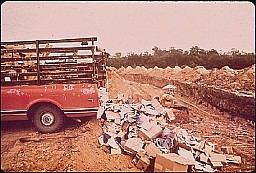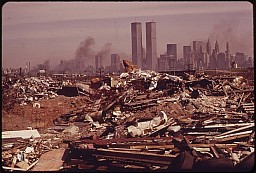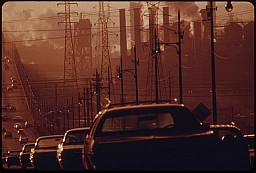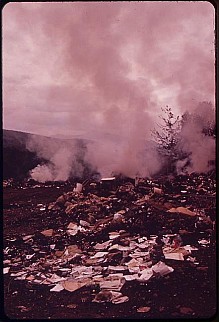January 24, 2017
The year 1970 was a turning point for our nation’s environment. On January 2 of that year, President Richard Nixon signed the National Environmental Policy Act into law; and on December 2, his administration created the United States Environmental Protection Agency (EPA).
The creation of EPA as an independent agency was the result of a rising tide of concern over our nation’s environment; the first Earth Day was held on April 22, 1970. With strong bipartisan support, legislators convinced the Nixon administration that a single agency was needed; one that would consolidate under a single umbrella a myriad of federal activities—including research, monitoring, standard-setting, and enforcement—to ensure the protection of our nation’s environment.
Looking back from the vantage of today’s fractured body politic, how did such a monumental bipartisan action take place? The nation’s air, water, land, wildlife, and indeed its citizens, were feeling the onslaught of decades of environmental neglect and pollution. Here are just a few examples:
 In June 1969, after decades of industrial pollution being legally piped into it, an oil slick on Ohio’s Cuyahoga River caught fire—and not for the first time.
In June 1969, after decades of industrial pollution being legally piped into it, an oil slick on Ohio’s Cuyahoga River caught fire—and not for the first time.- Between 1947 and 1977, General Electric (GE) dumped an estimated 1.3 million pounds of polychlorinated biphenyls (PCBs) into the Hudson River.
- Before EPA created the Resource Conservation and Recovery Act of 1976, solid waste was dumped into open trenches and unlined landfills, and often burned.
- The American Bald Eagle, peregrine falcon, osprey, brown pelican, and other birds were being decimated by the widespread use of DDT.
- Acid rain, caused by sulfur dioxide (SO2) and nitrogen oxides (NOx) emissions from power plants, was impacting freshwater systems and reducing fish populations around the country.
- Children and adults were being harmed by high levels of lead in our air (due to lead in gasoline). In 1973, EPA introduced a program designed to gradually reduce lead levels in gasoline, and eliminate its use altogether in 1995. As a result, between 1984 and 1995, airborne lead concentrations throughout the country decreased 89 percent.
- Under the 1976 Toxic Substances Control Act, EPA has compiled an inventory of roughly 84,000 chemicals that have been produced in, or imported to, the United States.
Many Americans have expressed concern over the new Administration’s nomination of Oklahoma Attorney General Scott Pruitt to head EPA. Pruitt has questioned the validity of climate science, stating that the “debate is far from settled.” He has participated in numerous lawsuits filed against the Agency he has been nominated to lead, most recently the Administration’s Clean Power Plan. He has disputed whether toxic mercury is a public health danger and has also disputed as politically motivated EPA’s finding linking hydraulic fracturing with contamination of drinking water resources.
Stated Pruitt, “When you look at the EPA, and the role that it’s played over the last several years, there’s going to be substantial change in that agency. There’s going to be a regulatory rollback.”
Nevertheless, since that first Earth Day and the creation of EPA, concern for the health of the environment is shared by millions of Americans as well as citizens the world over. That concern, and the basic lifestyle changes it has encouraged, are not likely to go away.
Shortly after its formation, EPA hired freelance photographers to capture images relating to environmental problems, EPA activities, and everyday life in the 1970s. The U.S. National Archives digitized more than 15,000 photographs from the Documerica Project, which ran from 1971-1977. As the saying goes, “a picture is worth a thousand words,” so in closing, I offer a few of the photos below. All images are courtesy of U.S. National Archives.
By Athena Lee Bradley (with editorial input from Robert Kropp)








Comments (0)
Add a Comment